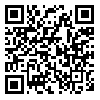Volume 28, Issue 4 (7-2024)
IBJ 2024, 28(4): 182-194 |
Back to browse issues page
Ethics code: IR.SBMU.RETECH.REC.1400.785
Download citation:
BibTeX | RIS | EndNote | Medlars | ProCite | Reference Manager | RefWorks
Send citation to:



BibTeX | RIS | EndNote | Medlars | ProCite | Reference Manager | RefWorks
Send citation to:
Saberi F, Dehghan Z, Taheri Z, Pilehchi T, Zali H. Deciphering Molecular Mechanisms of Cutaneous Leishmaniasis, Pathogenesis and Drug Repurposing through Systems Biology. IBJ 2024; 28 (4) :182-194
URL: http://ibj.pasteur.ac.ir/article-1-4177-en.html
URL: http://ibj.pasteur.ac.ir/article-1-4177-en.html
Abstract:
Background: Cutaneous leishmaniasis is a major health problem caused by an intracellular pathogen of the genus Leishmania. CL results in morphologically distinct skin injuries, ranging from nodules to plaques and ulcers, which persist as a recuperating incessant injury depending on the type of contaminating parasite. There is still no effective treatment to reduce the skin lesions in patients infected with CL. The aim of this study was to develop strategies to treat skin lesions in CL patients.
Methods: We retrieved the transcriptomic data of skin lesions from patients with CL and normal skin from the GEO database. The PPIN was constructed using the STRING database and Cytoscape v3.10.1 software. Critical genes were identified by topological network analysis and cluster detection. Finally, gene ontology and repurposing drugs for critical genes were determined.
Results: CD8A, IFNG, IL-6, PTPRC, CCR7, TLR2, GSTA5, CYBB, IL-12RB2, ITGB2, FCGR3A, CTLA4, and IFNG were identified as the critical genes in PPIN and subnetworks. Enrichment analysis revealed that T-cell receptor signaling, TLR signaling, cytokine-cytokine receptor interaction, graft-versus-host disease, leishmaniasis, chemokine signaling, primary immunodeficiency, and Th17 cell differentiation were the major pathways associated with critical genes. The drug repurposing results identified cyclosporine, rituximab, infliximab, blinatumomab, and methylprednisolone as candidates for treatment of CL.
Conclusion: After validating our model with available experimental data, we found that critical molecules and drug candidates play a crucial role in
the treatment of skin lesions caused by Leishmania in prospective studies.
Methods: We retrieved the transcriptomic data of skin lesions from patients with CL and normal skin from the GEO database. The PPIN was constructed using the STRING database and Cytoscape v3.10.1 software. Critical genes were identified by topological network analysis and cluster detection. Finally, gene ontology and repurposing drugs for critical genes were determined.
Results: CD8A, IFNG, IL-6, PTPRC, CCR7, TLR2, GSTA5, CYBB, IL-12RB2, ITGB2, FCGR3A, CTLA4, and IFNG were identified as the critical genes in PPIN and subnetworks. Enrichment analysis revealed that T-cell receptor signaling, TLR signaling, cytokine-cytokine receptor interaction, graft-versus-host disease, leishmaniasis, chemokine signaling, primary immunodeficiency, and Th17 cell differentiation were the major pathways associated with critical genes. The drug repurposing results identified cyclosporine, rituximab, infliximab, blinatumomab, and methylprednisolone as candidates for treatment of CL.
Conclusion: After validating our model with available experimental data, we found that critical molecules and drug candidates play a crucial role in
the treatment of skin lesions caused by Leishmania in prospective studies.
Type of Study: Full Length/Original Article |
Subject:
Molecular Genetics & Genomics
| Rights and permissions | |
 |
This work is licensed under a Creative Commons Attribution-NonCommercial 4.0 International License. |








.png)
